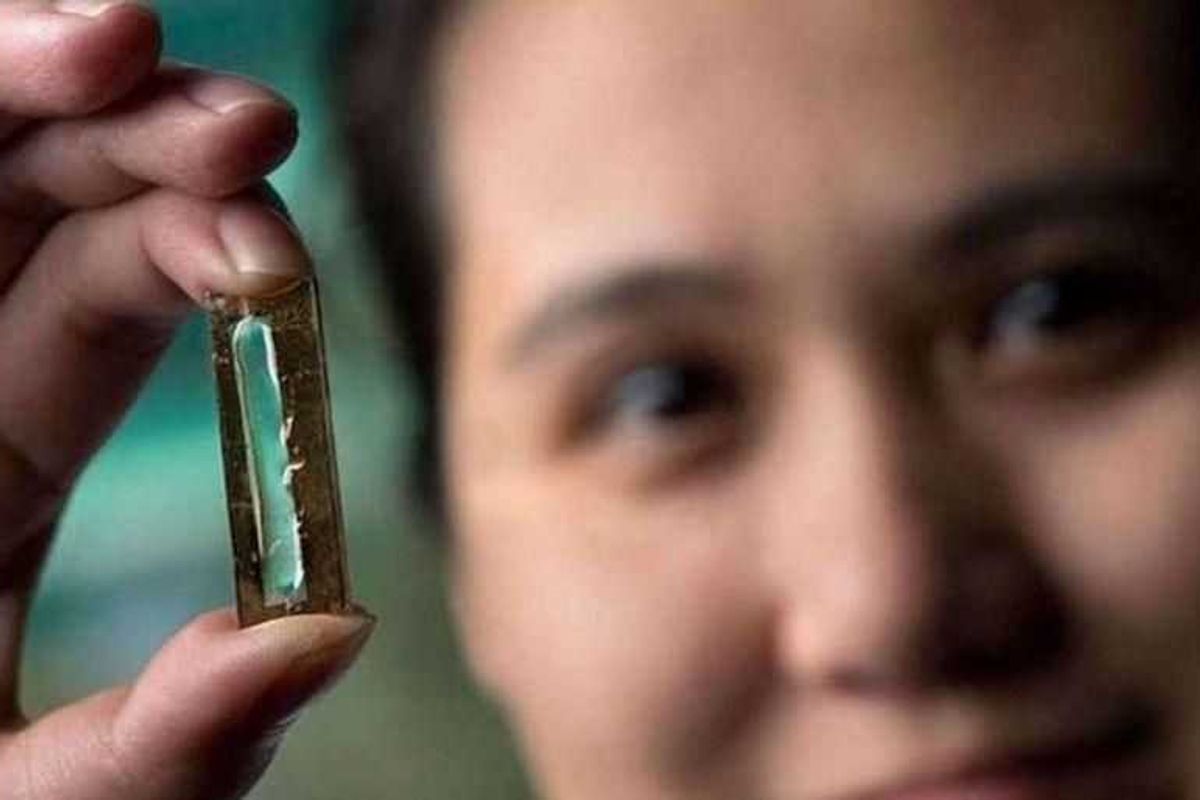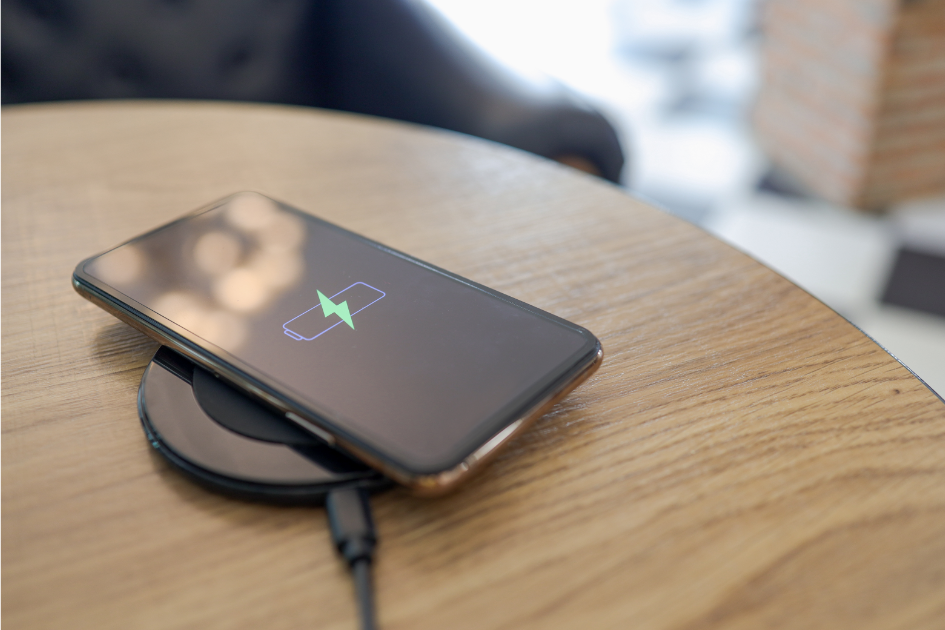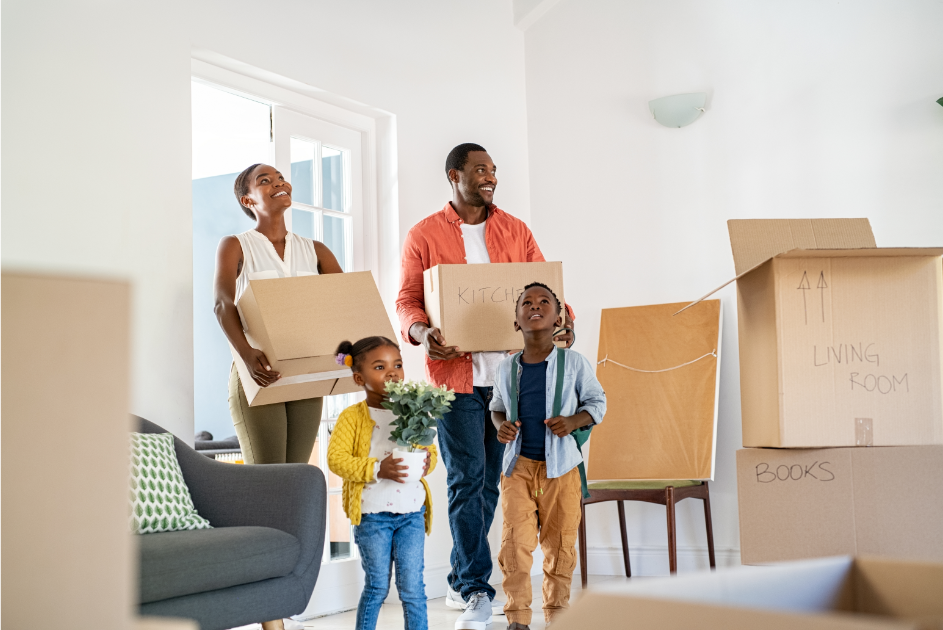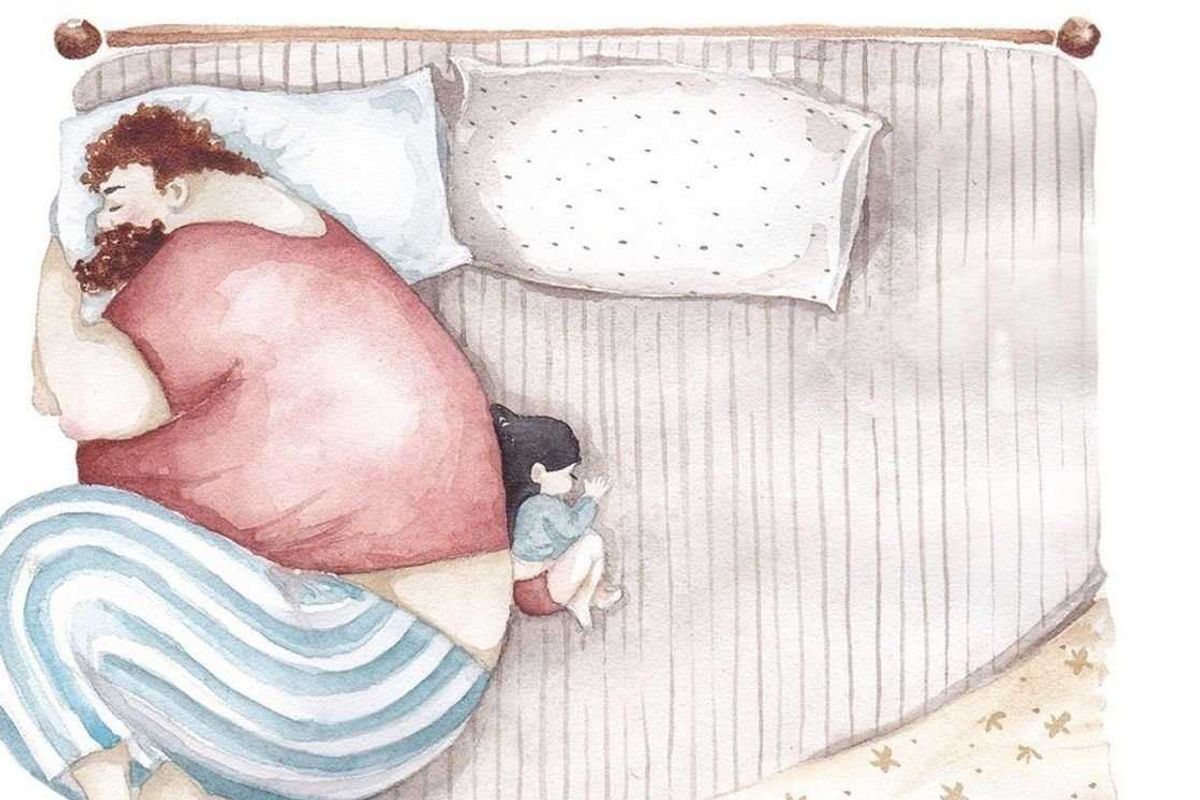31 celebrities who smashed the stigma surrounding mental illness in 2016.
"Like a dandelion up through the pavement, I persist."
It may not seem like that big of a deal when a celebrity speaks up about their experiences with mental illness. But it is.
Throughout 2016, dozens of actors, authors, artists, and athletes — trailblazers we're used to seeing smiling on red carpets or snagging gold medals on TV — shared the personal battles they've faced behind closed doors. It was a groundbreaking year.
“It levels the playing field," Aaron Harvey says of the many public figures who chose to speak up. Harvey is the founder of Intrusive Thoughts, a group set on humanizing those living with mental illness. “Suddenly, you realize the same struggles that you have might be the same struggles that someone you really idolize have. And that [makes it] OK."
The stigma surrounding mental illness is taking lives. Many millions of people living with conditions like depression and anxiety are shamed into believing there's something inherently wrong with them — that they're weak, for instance, or even dangerous to others. They suffer in silence because of it.
When a person with a platform becomes a face others can relate to, it becomes a little bit easier for someone else to follow in their footsteps, talk to someone, and get the help they need. Speaking up can save a life.
Here are 31 celebrities who spoke out in 2016 — some of them for the first time — about their experiences living with a mental illness:
1. Actress Kristen Bell wrote about why you can't trust all of your thoughts when you're battling depression.
Photo by Valerie Macon/AFP/Getty Images.
"For me, depression is not sadness. It’s not having a bad day and needing a hug. It gave me a complete and utter sense of isolation and loneliness. Its debilitation was all-consuming, and it shut down my mental circuit board. I felt worthless, like I had nothing to offer, like I was a failure. Now, after seeking help, I can see that those thoughts, of course, couldn’t have been more wrong." — Kristen Bell, on living with depression
2. Singer Selena Gomez reminded us that you never really know what's going on in someone else's head.
Photo by Valerie Macon/AFP/Getty Images.
"I had to stop. 'Cause I had everything, and I was absolutely broken inside. And I kept it all together enough to where I would never let you down, but I kept it too much together, to where I let myself down. I don't want to see your bodies on Instagram, I want to see what's in here. [puts hand on heart] I'm not trying to get validation, nor do I need it anymore. ... If you are broken, you don’t have to stay broken." — Selena Gomez, on living with anxiety and depression
3. Musical artist Kid Cudi got candid about the limitations that living with a mental illness put on his own life.
Photo by Michael Hickey/Getty Images.
"My anxiety and depression have ruled my life for as long as I can remember and I never leave the house because of it. I can't make new friends because of it. I don't trust anyone because of it and Im tired of being held back in my life. I deserve to have peace. I deserve to be happy and smiling. Why not me?" — Kid Cudi, on living with anxiety and depression
4. Actor Wentworth Miller opened up about becoming the butt of a body-shaming joke amid his struggle to survive.
Photo by Angela Weiss/Getty Images.
"Now, when I see that image of me in my red t-shirt, a rare smile on my face, I am reminded of my struggle. My endurance and my perseverance in the face of all kinds of demons. Some within. Some without. Like a dandelion up through the pavement, I persist." — Wentworth Miller, on living with depression
5. Actress Hayden Panettiere shared with fans that they might be seeing less of her because, first and foremost, she needed to prioritize getting well.
Photo by Mark Ralston/AFP/Getty Images.
“The postpartum depression I have been experiencing has impacted every aspect of my life. Rather than stay stuck due to unhealthy coping mechanisms, I have chosen to take time to reflect holistically on my health and life. Wish me luck!" — Hayden Panettiere, on living with postpartum depression
6. Singer Zayn Malik penned an essay on why he had to cancel performances due to severe anxiety.
Photo by Willy Sanjuan/Invision/AP.
"The thing is, I love performing. I love the buzz. I don’t want to do any other job. That’s why my anxiety is so upsetting and difficult to explain. It’s this thing that swells up and blocks out your rational thought processes. Even when you know you want to do something, know that it will be good for you, that you’ll enjoy it when you’re doing it, the anxiety is telling you a different story. It’s a constant battle within yourself." — Zayn Malik, on living with anxiety
7. Artist Lady Gaga revealed a secret about her own battles at an event benefitting young homeless teens in New York.
Photo by Stuart C. Wilson/Getty Images.
"My own trauma in my life has helped me to understand the trauma of others. I told the kids today that I suffer from a mental illness. I suffer from PTSD. I've never told that to anyone before, so here we are." — Lady Gaga, on living with post-traumatic stress disorder
8. NFL wide receiver Brandon Marshall explained why organizing with one another — not hiding away — is crucial for those living with a mental illness.
Photo by Julio Cortez/AP.
“I thought, ‘How many others are out there suffering?’ I tell people all the time, you know, where we’re at in [the mental health] community is where the cancer and HIV community was 20, 25 years ago. So we have to galvanize this community.” — Brandon Marshall, on living with borderline personality disorder
9. Actress Rachel Bloom showed us why we shouldn't let stereotypes about medication dictate whether we should get the proper help we need.
Photo by Christopher Polk/Getty Images for The Critics' Choice Awards.
"I had gone to therapists, but for the first time I sought out a psychiatrist. In his office I finally felt safe. I told him everything. Each session improved my life. He diagnosed me with low-grade depression and put me on a small amount of Prozac. There’s a stereotype (I had believed) that antidepressants numb you out; that didn’t happen to me." — Rachel Bloom, on living with depression
10. Musical artist Justin Vernon of Bon Iver got real about what a panic attack can actually feel like.
Photo by D Dipasupil/Getty Images.
“It was like: ‘Oh my god, my chest is caving in, what the f**k is going on?’ I don’t like talking about it, but I feel it’s important to talk about it, so that other people who experience it don’t feel it’s just happening to them.” — Justin Vernon, on living with panic attacks and depression
11. Singer Demi Lovato pointed out the importance of consistently staying on top of your health for the long haul.
Photo by Valerie Macon/AFP/Getty Images.
"It’s not something where you see a therapist once or you see your psychiatrist once, it’s something you maintain to make sure that you want to live with mental illness. You have to take care of yourself.” — Demi Lovato, on living with bipolar disorder
12. Actress Lena Dunham opened up about how anxiety affects her day-to-day routines.
Photo by Emma McIntyre/Getty Images.
“I’ve always been anxious, but I haven’t been the kind of anxious that makes you run 10 miles a day and make a lot of calls on your BlackBerry. I’m the kind of anxious that makes you like, ‘I’m not going to be able to come out tonight, tomorrow night, or maybe for the next 67 nights.’” — Lena Dunham, on living with anxiety
13. NFL guard Brandon Brooks discussed the difference between game-day jitters and the type of anxiety he experiences.
Photo by Greg Trott/AP.
“I wanted to get to the bottom of what’s going on. Basically, I found out recently that I have an anxiety condition. What I mean by anxiety condition [is] not nervousness or fear of the game. ... I have, like, an obsession with the game. It’s an unhealthy obsession right now and I’m working with team doctors to get everything straightened out and getting the help that I need and things like that.” — Brandon Brooks, on living with anxiety
14. Actress Evan Rachel Wood spoke out about how our world's tendency to overlook or dismiss certain groups can complicate a person's mental health.
Photo by Frazer Harrison/Getty Images.
"For so long, I was ashamed. You’re dealing with the shame that the world has imposed upon you, and then on top of that, the shame of identifying that way. You’re totally looked down upon in and out of the LGBT community. A good way to combat that and the stereotypes is to be vocal." — Evan Rachel Wood, on living with depression and coming out as bisexual
15. Actress Cara Delevingne got real about her early struggles living with a sense of hopelessness.
Photo by Valerie Macon/AFP/Getty Images.
"I'm very good at repressing emotion and seeming fine. As a kid I felt like I had to be good and I had to be strong because my mum wasn't. So, when it got to being a teenager and all the hormones and the pressure and wanting to do well at school — for my parents, not for me — I had a mental breakdown. I was suicidal. I couldn't deal with it any more. I realized how lucky and privileged I was, but all I wanted to do was die." — Cara Delevingne, on living with depression
16. Comedian Patton Oswalt laid out the difference between living with depression and surviving the devastation of losing a loved one.
Photo by Richard Shotwell/Invision/AP.
“Depression is more seductive. Its tool is: ‘Wouldn’t it be way more comfortable to stay inside and not deal with people?’ Grief is an attack on life. It’s not a seducer. It’s an ambush or worse. It stands right out there and says: ‘The minute you try something, I’m waiting for you.’” — Patton Oswalt, on living with depression and the grief brought on by his wife's death
17. Singer Kesha opened up about what led her to a rehab program focused on treating eating disorders.
Photo by Angela Weiss/AFP/Getty Images.
"I felt like part of my job was to be as skinny as possible and, to make that happen, I had been abusing my body. I just wasn't giving it the energy it needed to keep me healthy and strong." — Kesha, on living with an eating disorder
18. Author John Green wrote about the dangers of romanticizing mental illness.
Photo by Cooper Neill/Getty Images for Allied-THA.
"Mental illness is stigmatized, but it is also romanticized. If you google the phrase 'all artists are,' the first suggestion is 'mad.' We hear that genius is next to insanity. ... Of course, there are kernels of truth here: Many artists and storytellers do live with mental illness. But many don’t. And what I want to say today, I guess, is that you can be sane and be an artist, and also that if you are sick, getting help — although it is hard and exhausting and inexcusably difficult to access — will not make you less of an artist." — John Green, on living with depression
19. Musical artist Halsley discussed her attempt at suicide as a teenager.
Photo by Frazer Harrison/Getty Images.
“I had tried to kill myself. I was an adolescent; I didn’t know what I was doing. Because I was 17, I was still in a children’s ward. Which was terrifying. I was in there with 9-year-olds who had tried to kill themselves.” — Halsley, on living with bipolar disorder, and once staying in a psychiatric hospital
20. Prince Harry addressed the problem with assuming people who seemingly have their lives in order aren't struggling with an invisible issue.
Photo by Chris Jackson - Pool/Getty Images.
“You know, I really regret not ever talking about it. ... A lot of people think if you’ve got a job, if you’ve got financial security, if you’ve got a family, you’ve got a house, all that sort of stuff — everyone seems to think that is all you need and you are absolutely fine to deal with stuff.” — Prince Harry, on living with grief after his mother's death
21. Actress Rowan Blanchard explained why living with a mental illness can be a learning opportunity.
Photo by Mike Windle/Getty Images for WE Day.
"I learned this year that happiness and sadness are not mutually exclusive. They can exist within me at the same time in the same moment. While also becoming more forgiving of myself and my emotions, I became more forgiving of others, specifically other teenagers." — Rowan Blanchard, on living with depression
22. Olympic swimmer Michael Phelps spoke candidly about why even gold medals couldn't truly make him happy.
Photo by Clive Rose/Getty Images.
“I went in with no self-confidence, no self-love. I think the biggest thing was, I thought of myself as just a swimmer, and nobody else. ... I was lost, pushing a lot people out of my life — people that I wanted and needed in my life. I was running and escaping from whatever it was I was running from.” — Michael Phelps, on living with mental illness
23. Actress Jenifer Lewis talked about how the AIDS epidemic led her to realize she needed help.
Photo by Jean Baptiste LaCroix/AFP/Getty Images.
"Sometimes I suspected that something was not quite right. Especially during the time when the AIDS epidemic was at its height and my grief was pretty much out of control. No one was talking about bipolar disorder and mental illness back then. I had lost so many friends and loved ones. My spiral into depression was overwhelming; I could not function. That’s when I couldn’t ignore the fact that something was wrong anymore.” — Jenifer Lewis, on living with bipolar disorder
24. Singer Adele highlighted why not each form of mental illness manifests the same way in every person.
Photo by Jordan Strauss/Invision/AP.
"My knowledge of postpartum [depression] — or post-natal, as we call it in England — is that you don’t want to be with your child; you’re worried you might hurt your child; you’re worried you weren’t doing a good job. But I was obsessed with my child. I felt very inadequate; I felt like I’d made the worst decision of my life. ... It can come in many different forms." — Adele, on living with postpartum depression
25. Actor Jared Padalecki launched a new "I Am Enough" campaign, selling shirts to support initiatives that fight depression and self-harm.
Photo by Chris Frawley/Warner Bros. Entertainment Inc. via Getty Images.
“I am enough. And you are enough. ... I know I can keep fighting and I know that I’m trying to love myself, but sometimes you feel like you’re not enough. So this message is helping me kind of understand that I am enough — just the way I was made.” — Jared Padalecki, on living with depression
26. Actress Amanda Seyfried nailed why we should be treating mental illness just as seriously as any other disease or condition.
Photo by Lintao Zhang/Getty Images for cle de peau BEAUTE.
"I’m on [antidepressant] Lexapro, and I’ll never get off of it. I’ve been on it since I was 19, so 11 years. I’m on the lowest dose. I don’t see the point of getting off of it. Whether it’s placebo or not, I don’t want to risk it. And what are you fighting against? Just the stigma of using a tool? A mental illness is a thing that people cast in a different category [from other illnesses], but I don’t think it is. It should be taken as seriously as anything else." — Amanda Seyfried, on living with anxiety and depression
27. Musical artist Keke Palmer opened up about how her own mental illness postponed the release of a new album.
Photo by Kimberly White/Getty Images for Glamour.
“I stopped trying all together because I allowed people to make me believe that being an artist meant having big budget music videos and big record producers backing you. When in reality, all being an artist means is to be fearless in your creative pursuits. My anxiety, caused by the habit of unconsciously holding my breath, coupled with the stress of my personal life at that time created a lot of hard years of depression for me.” — Keke Palmer, on living with anxiety
28. Actress Catherine Zeta-Jones said she's in a good place right now, thanks to identifying her struggle and finding the help that was right for her.
Photo by Justin Tallis/AFP/Getty Images.
"Finding out that it was called something was the best thing that ever happened to me! The fact that there was a name for my emotions and that a professional could talk me through my symptoms was very liberating. There are amazing highs and very low lows. My goal is to be consistently in the middle. I’m in a very good place right now." — Catherine Zeta-Jones, on living with bipolar disorder
29. Actor Devon Murray used World Mental Health Day to share his own ups and downs with fans on Twitter.
Photo by Scott Gries/Getty Images.
"I've been battling depression in silence for ten years and only recently spoke about it and [it] has made a huge difference. I had suicidal thoughts this year and that was the kick up the arse that I needed! Open up, talk to people. If you suspect a friend or family member is suffering in silence [reach out] to them. Let them know you care." — Devon Murray, on living with depression
30. Musical artist Jade Thirlwall discussed a dark time in her life that looked picture-perfect from afar.
Photo by Ian Gavan/Getty Images for Sony Pictures.
"My periods stopped and things were getting out of control, but I don't think I really cared about what was happening to me. I felt so depressed at the time that I just wanted to waste away and disappear. ... It should have been a really happy time — my career was successful, 'Black Magic' was doing well, and we were traveling and performing. On the surface I was happy, but inside I felt broken." — Jade Thirlwall, on battling anorexia
31. Musician Ellie Goulding explained how her panic attacks often came at the worst possible times.
Photo by Ian Gavan/Getty Images.
"I was skeptical [of going to therapy] at first, because I’d never had therapy, but not being able to leave the house was so debilitating. And this was when my career was really taking off. My surroundings would trigger a panic attack, so I couldn’t go to the studio unless I was lying down in the car with a pillow over my face. I used to beat myself up about it." — Ellie Goulding, on living with anxiety and facing panic attacks
Many celebrities have helped bring the conversation around mental health into the mainstream. But it's on us to make the real change happen.
“While it’s amazing to have celebrities out there blazing trails and introducing a radical new transparency," Harvey notes, "the most important thing is that individual sufferers communicate with their everyday connections. If we really want to make an impact on stigma, it can’t just be a headline."
If you need help, call the National Suicide Prevention Lifeline at 1‑800‑273‑TALK (8255). If you want to learn more about mental illness, visit the National Alliance on Mental Health.
- John Hughs '16 Candles' reboot to star Latinas - Upworthy ›
- John Hughs '16 Candles' reboot to star Latinas - Upworthy ›
- Johnny Depp's trial illuminates the need to dismantle the "movie star" myth - Upworthy ›
- People are relating to this hilarious skit on intrusive thoughts - Upworthy ›
- Male athlete roasted over period pain tweet - Upworthy ›
- Neuroscientists explain a fascinating phenomenon where people see faces as dragons - Upworthy ›





 Phone charging.
Phone charging. bill nye chemistry GIF by NETFLIX
bill nye chemistry GIF by NETFLIX 
 Family moving into a new home.
Family moving into a new home.  Driving Road Trip GIF by Rosen Hotels & Resorts
Driving Road Trip GIF by Rosen Hotels & Resorts 
 A father does his daughter's hair
A father does his daughter's hair A father plays chess with his daughter
A father plays chess with his daughter A father plays hula hoop with his daughter
A father plays hula hoop with his daughter Tea time delight amidst piles of work.All illustrations are provided by Soosh and used with permission.
Tea time delight amidst piles of work.All illustrations are provided by Soosh and used with permission. A dad performs a puppet show for his daughterAll illustrations are provided by Soosh and used with permission.
A dad performs a puppet show for his daughterAll illustrations are provided by Soosh and used with permission. A dad walks with his daughter on his backAll illustrations are provided by Soosh and used with permission.
A dad walks with his daughter on his backAll illustrations are provided by Soosh and used with permission. A dad carries a suitcase that his daughter holds onto.
A dad carries a suitcase that his daughter holds onto. A dad holds his sleeping daughter.All illustrations are provided by Soosh and used with permission.
A dad holds his sleeping daughter.All illustrations are provided by Soosh and used with permission. A superhero dad looks over his daughter.All illustrations are provided by Soosh and used with permission.
A superhero dad looks over his daughter.All illustrations are provided by Soosh and used with permission. A dad takes the small corner of the bed with his dauthter.All illustrations are provided by Soosh and used with permission.
A dad takes the small corner of the bed with his dauthter.All illustrations are provided by Soosh and used with permission.
 Generation Jones was born between 1954 and 1965.
Generation Jones was born between 1954 and 1965.